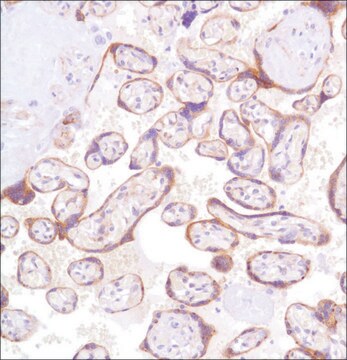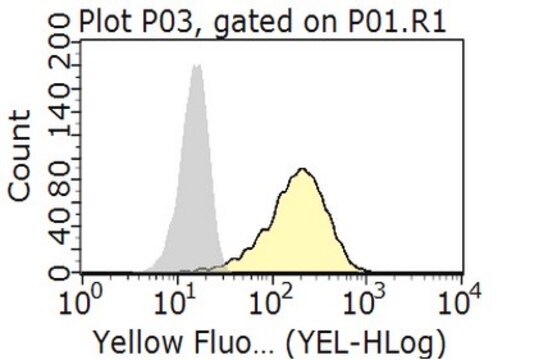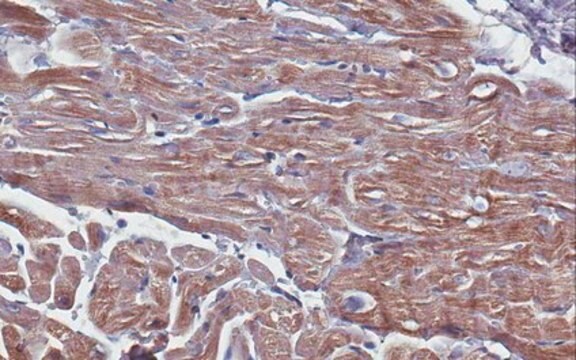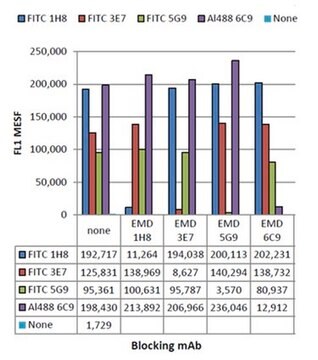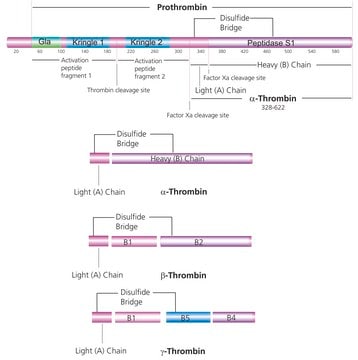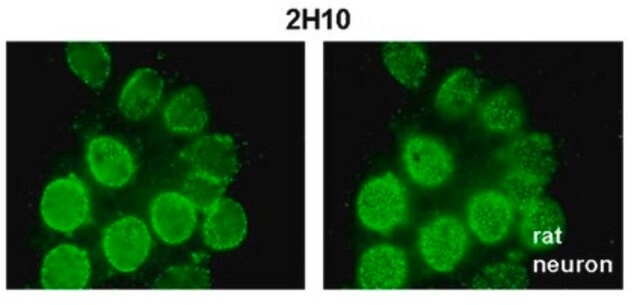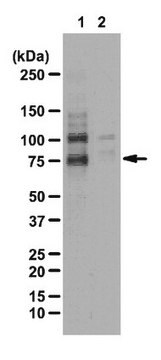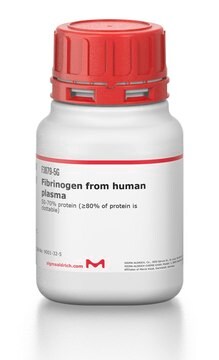MABC667
Anti-GPC3 Antibody, clone 9C2
ascites fluid, clone 9C2, from mouse
Sinônimo(s):
SGB, DGSX, MXR7, SDYS, SGBS, OCI-5, SGBS1, GTR2-2, Glypican-3, Intestinal protein OCI-5
About This Item
Produtos recomendados
fonte biológica
mouse
Nível de qualidade
forma do anticorpo
ascites fluid
tipo de produto de anticorpo
primary antibodies
clone
9C2, monoclonal
reatividade de espécies
mouse, human
técnica(s)
flow cytometry: suitable
immunofluorescence: suitable
immunohistochemistry: suitable
western blot: suitable
Isotipo
IgG1
nº de adesão UniProt
Condições de expedição
wet ice
modificação pós-traducional do alvo
unmodified
Informações sobre genes
human ... GPC3(2719)
Descrição geral
Imunogênio
Aplicação
Immunofluorescence Analysis: A 1:200-1,000 dilution from a representative lot detected GPC3 in HeLa cells.
Flow Cytometry Analysis: A 1:200-400 dilution from a representative lot detected GPC3 in Jurkat cells.
Optimal working dilutions must be determined by end user.
Apoptosis & Cancer
Apoptosis - Additional
Qualidade
Western Blotting Analysis: A 1:500-2,000 dilution of this antibody detected GPC3 in mouse liver, HepG2, HEK293, Jurkat, SK-N-SH, PC-12, and F9 cell lysates.
Descrição-alvo
forma física
Armazenamento e estabilidade
Nota de análise
Mouse liver, HepG2, HEK293, Jurkat, SK-N-SH, PC-12, and F9 cell lysates
Exoneração de responsabilidade
Não está encontrando o produto certo?
Experimente o nosso Ferramenta de seleção de produtos.
Palavra indicadora
Danger
Frases de perigo
Declarações de precaução
Classificações de perigo
Aquatic Chronic 3 - Repr. 1A
Classe de risco de água (WGK)
WGK 2
Ponto de fulgor (°F)
Not applicable
Ponto de fulgor (°C)
Not applicable
Certificados de análise (COA)
Busque Certificados de análise (COA) digitando o Número do Lote do produto. Os números de lote e remessa podem ser encontrados no rótulo de um produto após a palavra “Lot” ou “Batch”.
Já possui este produto?
Encontre a documentação dos produtos que você adquiriu recentemente na biblioteca de documentos.
Nossa equipe de cientistas tem experiência em todas as áreas de pesquisa, incluindo Life Sciences, ciência de materiais, síntese química, cromatografia, química analítica e muitas outras.
Entre em contato com a assistência técnica